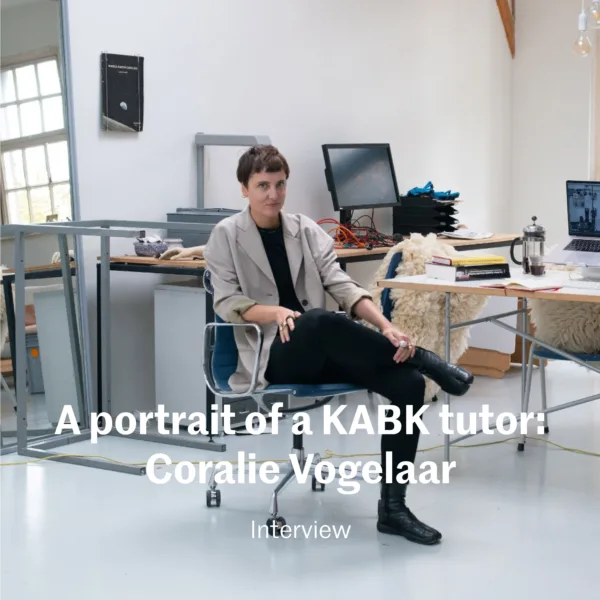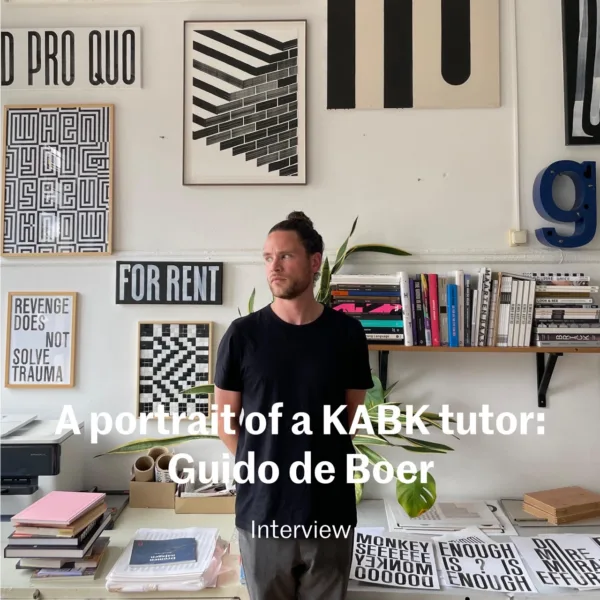Although I had never met this lecturer before, I immediately spotted him among the group of people having lunch outside in the sun. Red pants, an oversized sweater, and striking shoes. It’s photographer Ari Versluis’ thing: “Clothing expresses who you are.” Ari is a lecturer in the Bachelor Photography and the Master Photography and Society, but he also has an extensive portfolio as a photographer. Gucci, Palace, and G-star are among his clients. However, his life’s work, Exactitudes, might play an even bigger role in his career. A book featuring series of different people who look almost identical, photographed in the same pose against a neutral background.
So, Exactitudes.
We are now working on the seventh extended edition. This edition takes young people as a starting point again, and immigration plays a major role as well. Exactitudes is a project that Ellie Uyttenbroek and I started in 1994. It all began at Parkzicht Rotterdam with the rise of hardcore scene dressed in Italian candy-coloured tracksuits and addicted to 180 bpm beats per minute or more. A huge creative force. We shaved our heads, put on bombers, walked into the Energiehal Rotterdam, and joined the party. That’s how we got gabbers in front of our lens. We placed the photos next to each other, and that’s how the first edition of Exactitudes was born. I owe a large part of my career to that project.
What sparked your interest in gabbers at the time?
We are interested in how people present themselves. Ellie and I were curious about gabbers, their identity, and their distinctive style. But the bigger question is: what is identity, really? Is it who you are, or what you belong to? And who am I, then? These are the questions we want to provoke. My inspiration comes from the streets, that’s where it all starts. Ask yourself: who actually dictates fashion? Is it the streets or the big brands? I choose the streets.
So, Rotterdam must be a huge source of inspiration for you.
Rotterdam was my creative starting point. I’m originally from Brabant, but when I started studying Photography at the Willem de Kooning Academy, I moved to Rotterdam. At the time, I was a punk. Rotterdam was a working-class city, which fascinated me, and it was also the birthplace of gabber culture. People there have a sort of do-it-yourself mentality.


Do you still consider Rotterdam your home?
I now live in Flanders on a farm with two cows. I love being outside of the city bubble; I feel a sense of emptiness again and space for reflection. But In a way, this still about identity: about how I relate to this new environment. I’m learning a lot about my own social identity, but also about rural identity. As humans, we have a need to belong somewhere. There’s a certain “no-nonsense, get-things-done” mentality here, which I really appreciate. I also find a lot of inspiration here. When I see an incredibly cool girl driving a tractor, I immediately visualise it in a campaign.
What came first, fashion or photography?
I actually find fashion a tricky term; it has a negative connotation, especially with today’s fast fashion. I’m interested in people’s clothing choices, clothing is a form of expression. I’m fascinated by someone’s appearance. Sometimes you have that wow moment when someone triggers something in you, and you don’t even know why. Being a photographer allows me to immerse myself in subcultures. It’s my way of stepping into different worlds. In a way, I’m always studying how people look.
Oh, and what do you see when you look at me?
That’s a dangerous question! That checkered shirt can represent a lot of things, and I see a nose ring and a tattoo peeking out from under your shirt. Your nails are a bit unkempt, haha. I do get a bit of a rock & roll vibe from you. But also from the bomber jacket worn by the person sitting next to us. I immediately start wondering: when was that bomber made? Is it new or vintage? And what does that say about that person?

What’s it like to shoot for major brands like Gucci?
What I’ve learned is to always stay critical and do things differently than what these brands expect. When I did a shoot for Vivienne Westwood, for example, I dressed men in women’s clothing and vice versa. That was considered unusual at the time, but it became a success. As a photographer, you have to be willing to challenge conventions and take a stand. You have to try to be different and meaningful, especially now with the rise of AI.
Teaching, what does that mean to you?
I don’t necessarily teach, the students learn from me, and I learn from them. I made a very conscious choice to be in education because I want to contribute something. By now, I’ve been doing it for 30 years. The school is a community; it’s a space where you get the freedom to think about what you want to do.
What advice would you give students?
Engage in conversations with strangers. Go to a store to buy something instead of ordering online again. Pick up the phone to call about an assignment instead of waiting around. I’ve noticed that students are becoming more reserved, and it’s holding them back. By stepping out of your bubble and talking to people, you’ll find inspiration everywhere.









